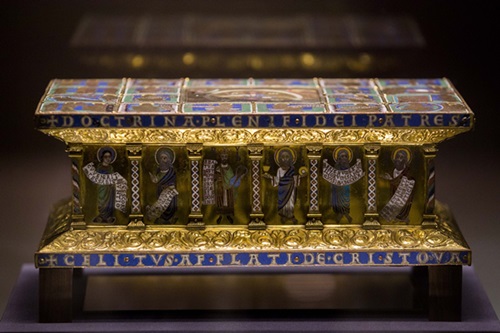The collection, also known as the Guelph Treasure or “Welfenschatz”, includes gold and silver objects, crucifixes and other church artifacts worth hundreds of millions of euros. It is yet to be decided whether or not the 3 Jewish previous owners were forced to sell the artifacts for a very low price to the Prussian state in 1935, just two years before Adolf Hitler became the evil Nazi dictator.
The conflict broke out at a difficult time for Germany, just after last year a huge collection of Nazi stolen billion worth art was found in a Munich apartment, another case which generated rage and sparked complaints all over Germany and across the world. The German state must consider the best options and take the rightest decision as they try to track down the yet to be found Nazi looted art.
According to a source, a former state president, judge, historian and eight member of the government assisted the conflict on Wednesday. Apparently the discussions are not ending yet and all parties are waiting for a recommendation during the next weeks.
With a 42-piece collection worth hundreds of millions in their hands, the heirs insist that the art dealers at the time were intimidated to sell the art collection to the Nazi state for a very low price. The collection was purchased in 1929 by the syndicate of Frankfurt art dealers, however, its value dropped during the Great Depression, the Yahoo News reports.
They sold the last pieces they had after the Depression, in 1935 to Prussia, at that time led by Gestapo secret police founder and air force chief, Hermann Goering.
According to an online statement, the Jewish owners and art dealers were not forced into selling the art to the Nazi state and they also received a fairly good price for their collection. According to the same source, some of the dealers were also living in Germany at the time of the sale, while some others were living abroad.
Another important fact in the whole trading story is that at the time of the sale, the art collection was stored in Amsterdam and not in Germany.
Markus Stoetzel, a lawyer representing the interests of the Jewish families in question, said that all the Jewish individuals involved, the art dealers and their families lost everything they had because of the ‘racial persecution’ in Germany at the time.
